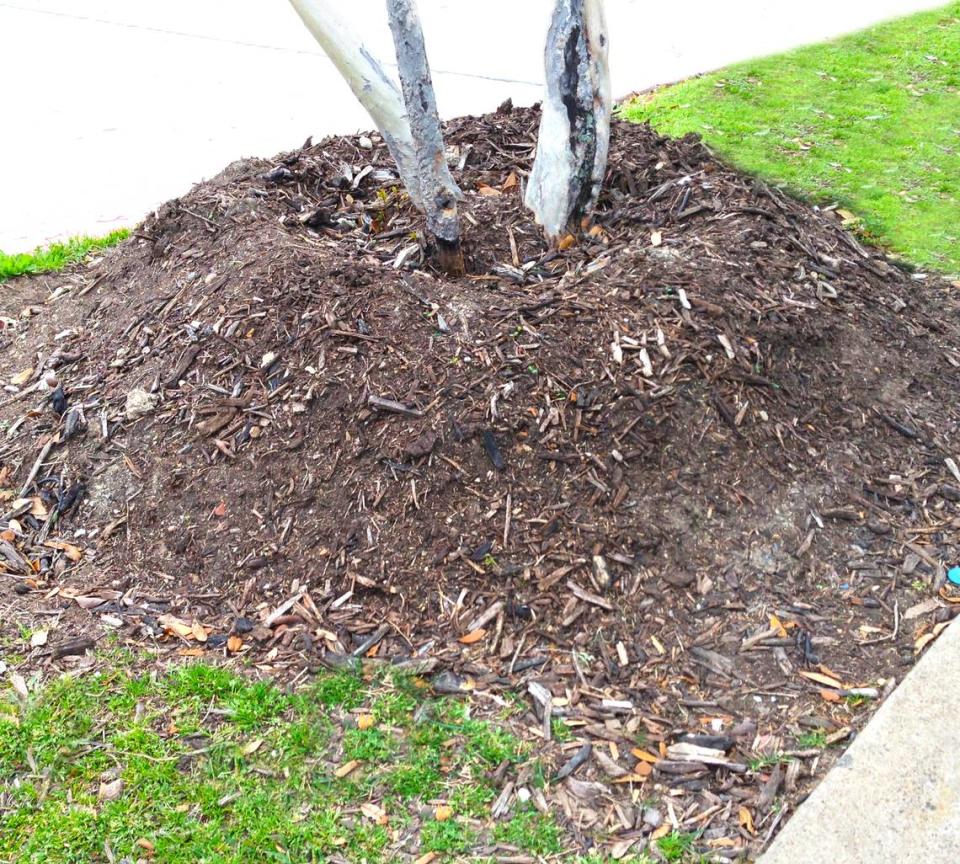Wood chips provide so mulch environmental good. Here’s where to get them. | Opinion
Black, brown, red, cypress, hardwood, pine, bark, nuggets, needles, stones – many options of mulch are available to a homeowner or a landscaper today. Such a cornucopia may make it difficult to choose what one should place around the trees and shrubs.
But let’s take a step back…what is the purpose of mulch? Aesthetically, it serves to refresh the look of the yard and potentially add a pop of color. Functionally, mulch retains moisture, regulates soil temperature, and suppresses weeds. As wood mulch breaks down into soil, it can help feed the plants where it is placed.
Not all mulches provide the desired benefits, and some could result in outright undesirable outcomes. Dyed mulches may be treated to decompose slower than untreated mulches and may contain post-consumer recycled wood, like wood pallets. Uniform mulches can clump together and get compacted, preventing water and nutrients from getting into the root zone. Some mulches have an unpleasant smell, and rock mulches may become flying projectiles when hit by mowers.
Importantly, applying mulch correctly is key to obtaining the desired benefits. Mulch should be two to four inches deep and should not touch the bark of the tree. Piling up mulch around the tree trunk, known as volcano mulching, causes bark to rot which leads to pests and diseases problems that eventually kill the tree.

For a positive example, visit the University of Kentucky campus. Trees are mulched in wide circles reaching out to the drip line of the canopy. Arborists’ wood chips have been used since April 2020. This mulch provides a non-uniform combination of wood chips, bark, and leaves, which decompose at different rates and encourage a diversity of beneficial soil organisms, fungi and bacteria that ultimately improve plant health. Wood chips provide a sustainable option for a natural, undyed look in the landscape. Arborist wood chips are also free and available from tree care companies, although typically only by the chip-truck load.
To provide access to arborist wood chips in more manageable quantities, Trees Lexington!, a local tree focused non-profit, recently partnered with the African Cemetery No. 2 where anyone can come and load up.
So the next time you or your landscaper are contemplating a mulching refresh, consider arborist wood chips and apply them properly, so your trees and shrubs get the most benefit.
Michael Potapov is a board member of the Lexington Tree Board and Trees Lexington!.

